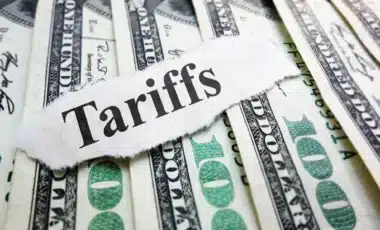Walmart has confirmed it will begin raising prices as early as late May due to increased tariffs on imports, following a strong first quarter that saw a surge in customer traffic and resilient financial performance.
The retail giant cited mounting cost pressures stemming from newly imposed duties on goods from China and other countries, which are expected to ripple through supply chains over the coming weeks.
According to Business Insider, this pricing shift comes amid broader concerns about inflationary impacts on consumer behavior. Walmart’s ability to adapt through strategic sourcing and scale will be critical as shoppers brace for visible changes at checkout.
Strong First Quarter in a Volatile Environment
Walmart reported first-quarter net sales of $165.6 billion, which, despite being slightly below analyst expectations, reflects continued strength in customer demand. Adjusted earnings per share reached 61 cents, exceeding the 58-cent average forecast compiled by LSEG.
CEO Doug McMillon stated,
“We delivered a solid first quarter in a dynamic operating environment. We’re serving customers and members in more ways, which is fueling our growth.” He emphasized the company’s ability to adapt through product mix optimization:
“We’ll just manage it in a way that mix becomes a strength.“
U.S. same-store sales increased by 4.5%, outperforming consensus expectations of 3.94%. The rise was driven by a 1.6% growth in transactions and a 2.8% increase in average ticket size. Consumers especially turned to fresh food, dairy products, pantry staples, and personal care items.
Price Increases Expected Amid Tariff Pressure
The company confirmed that price increases are imminent due to the pressure of newly imposed tariffs, especially those on imports from China and other trading partners. CFO John David Rainey noted in an interview that prices could begin rising toward the end of May, becoming more visible in June.
“We’re wired for everyday low prices, but the magnitude of these increases is more than any retailer can absorb,” Rainey said.
“It’s more than any supplier can absorb. And so I’m concerned that the consumer is going to start seeing higher prices.“
Despite this, Walmart reaffirmed its full-year guidance for fiscal 2026, expecting adjusted earnings per share between $2.50 and $2.60 and sales growth of 3% to 4%. For Q2, it forecasts net sales growth between 3.5% and 4.5%, above market expectations of 3.46%. Walmart declined to provide a profit forecast for Q2 due to the growing uncertainty.
E-Commerce Sees Historic Profitability
Walmart’s U.S. e-commerce sales rose 21% year-over-year, and 22% globally. For the first time, the e-commerce segment delivered a full quarter of profitability, driven by higher-margin businesses such as online advertising and its third-party marketplace.
These gains reflect Walmart‘s growing ability to monetize digital channels, especially as more shoppers turn to online platforms for convenience and variety.
Membership Programs and Customer Acquisition
The company also reported a 15% increase in global membership fee income, reflecting continued growth in its Walmart Plus subscriber base. While Walmart does not disclose exact membership figures, analysts at Barclays estimate that the program now exceeds 15 million members.
McMillon also highlighted that the current environment may offer similar customer acquisition opportunities as seen during past inflationary periods:
“If you look back two years ago when we saw inflation, we invited a lot of new customers to Walmart. We have a similar opportunity today.”
Consumer Behavior and Macroeconomic Backdrop
The broader U.S. economic environment continues to show signs of strain. Consumer sentiment declined for a fourth consecutive month in April, and U.S. GDP contracted in Q1 for the first time in three years, raising new concerns over a potential recession.
As a major retailer serving a broad demographic, Walmart’s performance offers a snapshot of shifting consumer behavior. Customers have been increasingly focused on value-driven purchases, with noticeable shifts in spending toward essentials.
Analysts Weigh In on Walmart’s Resilience
Analysts broadly agree that Walmart is better positioned than most retailers to manage tariff-related price pressures due to its scale, product range, and supplier relationships.
Joseph Feldman, analyst at Telsey Advisory Group, commented:
“Walmart will manage (tariffs) better than almost every other retailer.“
Brian Jacobsen, chief economist at Annex Wealth Management, added:
“There will likely be some demand destruction from tariffs, a complete wreck is unlikely.“
Meanwhile, CFO Rainey reiterated long-term confidence:
“With a longer view into the full year, we believe we can navigate well and achieve our full year guidance.“









